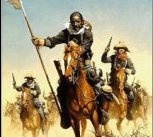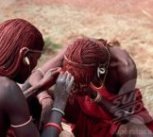Tie a Yellow Ribbon lyrics history
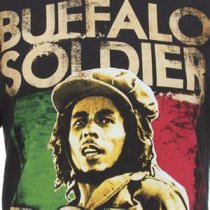 A family in my neighborhood has a son serving in Afghanistan. Outside their house yellow ribbons are tied around the trunks of the numerous trees located along the street. It got me to thinking of how the yellow ribbon became a symbol for the concern families and individuals feel for those loved ones far away serving our country in life-threatening circumstances. It symbolizes the hope felt that those loved ones will return safely.
A family in my neighborhood has a son serving in Afghanistan. Outside their house yellow ribbons are tied around the trunks of the numerous trees located along the street. It got me to thinking of how the yellow ribbon became a symbol for the concern families and individuals feel for those loved ones far away serving our country in life-threatening circumstances. It symbolizes the hope felt that those loved ones will return safely.
This is the story I discovered. In the years after the Civil War (1861-1865) the army was severely downsized while at the same time being faced with the need to protect settlers as they rapidly moved westward into the Great Plains, lands which had been promised "in perpetuity" to the Native Americans living there. (See my post of January 22nd, 2012, concerning Andrew Jackson and the "Trail of Tears.") The U.S. Army Cavalry was sent to the Plains to protect wagon trains going westward, homesteaders who had purchased cheap land from the federal government and to rein in the angry response Native Americans had to this encroachment upon what they considered their homelands.
Custer's defeat in 1876 is the most
famous expression of the outrage
felt by the Plains Indians.
After training, soldiers who were to be posted to the frontier would get a brief leave to return home to say good-bye to families, loved ones and sweethearts. When the time for final departure approached, many of these soldiers would leave something behind with their loved ones as a reminder of them while they were away. The yellow bandana that was a part of the cavalry uniform became the item most often left behind, and, as time passed, it became almost a ritual to leave this colorful item with the one most dear to a soldier's heart. Families or sweethearts of absent soldiers would wear the bandanas on clothing or in their hair, place them in windows, simply carry them in a pocket or handbag, or hang them from a tree or bush in the front of their homes. Listen to the words of the theme song for the 1949 classic John Ford film, "She Wore A Yellow Ribbon." It tells the story of a sweetheart and a cavalryman's yellow ribbon (i.e., bandana).
Some sources report that this tradition started with the black cavalry soldiers on the Great Plains. They, supposedly, were the first to practice this custom, and it later spread to soldiers of all races and nationalities. These black cavalry units were some of the best fighting units stationed on the frontier. However, following policies begun during the Civil War, they were all led by white officers. They were the most highly decorated units in the entire frontier cavalry, had the lowest desertion rates of any other units and, because of their superior fighting ability, were greatly respected and feared by the Native Americans of the Plains.
 "Buffalo Soldier" re-enactors.
"Buffalo Soldier" re-enactors.
Note the yellow bandanas.
The Plains Indians so admired the bravery and fighting ability of these black troops that they honored them with the name "Buffalo Soldiers." This was a gesture of recognition that was at first not understood by the U.S. Army. The buffalo was a sacred animal to the Plains Indians and it was only with a great deal of thought that they bestowed this name on their adversaries.
The American Bison, The sacred animal
of the Plains Indians that gave the
"Buffalo Soldiers" their name.
Respected and feared, both!
So the color yellow was established as the symbol of loved ones away fighting in wartime. This sets the stage for one of my favorite music videos, "Buffalo Soldiers" by Bob Marley and the Wailers. The lyrics are replete with "Rastafarian" references, but that is another story that I will touch upon briefly below. Listen to the lyrics closely and you will hear mention of the black man as wandering in the wilderness of the Americas, longing for his homeland, Africa.
A NOTE/DIGRESSION ON "RASTAFARIANS."
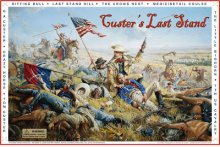 Marcus Garvey, the most
Marcus Garvey, the most
influential black person in the
U.S. during the 1920s.
The Rastafarian religion traces its roots back to Marcus Garvey, a Jamaican immigrant to the U.S. who founded the "back to Africa" movement during the 1920s. Garvey was a black nationalist who predicted that a black man would one day become a king in Africa. His prophecy was fulfilled in 1930 when Haile Selassie became King of Ethiopia. Rastafarians refer to Haile Selassie (he died in 1975) as the "Lion of Judah" and claim he was a direct descendant of King Solomon of the Old Testament and the Queen of Sheba (a black East African ruler).
King Haile Selassie of Ethiopia.
"The Lion of Judah." Rastafarians
consider him a god-like figure.
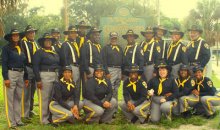 Masai women braiding their hair in
Masai women braiding their hair in
East Africa. Dreadlocks perhaps came
from this practice.
Dreadlocks have been adapted
as a hairstyle by many who
are not Rastafarians.
THE "GOLDEN RULE": LOVE
END OF DIGRESSION. BACK TO OUR STORY.
How did the "white" ribbon eventually
become "yellow?"
1973, 3 million copies in three weeks!!
The song had its run on the charts and faded away. Then, on November 4, 1979, the Iranian Hostage Crisis began while Jimmy Carter was entering the last year of his term as President. A group of militant Islamist students stormed and took possession of the United States Embassy in Tehran in support of the Iranian Revolution. Fifty-two Americans were held hostage for a total of 444 days. Finally, on January 20, 1981, just minutes after newly elected President Ronald Reagan was sworn into office, the hostages were released into United States custody and returned home. Following is a short video summary of the crisis.
You might also like



|
Yellow Ribbon Seahorse and Starfish Expandable Bangle Bracelet Jewelry (Delight & Co.)
|
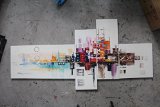
|
TJie Art Hand Painted Mordern Oil Paintings Wall Decor Abstract City Clouds Home Landscape Oil Paintings Splice 4-piece/set on Canvas Home (TJie Art)
|

